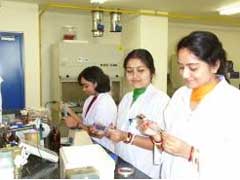-
Loan Agreement Date: March 31, 2006 (I)
March 30, 2007 (II)
March 10, 2008 (III)
March 31, 2009 (IV)
March 31, 2010 (V)Loan Amount: 14.900 billion yen (I)
13.583 billion yen (II)
72.100 billion yen (III)
77.753 billion yen (IV)
33.640 billion yen (V)Interest(%): 1.2-1.4 Repayment/Deferment Period (Years): 30/10 Executing Agency: Delhi Metro Rail Corporation Limited. State: Delhi
In the national capital region of Delhi, the population has doubled to 14 million over the past 20 years in conjunction with the rapid increase of private owned vehicles. The number of registered vehicles swelled from 520 thousand in 1980 to 4.17 million in 2004. Since Delhi has long lacked both a city railway network and short-distance rail lines connecting the suburbs, transportation has been forced to depend on only buses, private owned cars and two/three wheelers. The result is chronic congestion, and today the average vehicle speed in the city is extremely low at 13km/h. The acute problem of air pollution is further exacerbated by the low quality fuel and inefficient engines used in cars and buses.
It is therefore critical that a mass rapid transit system is developed in order to alleviate Delhi’s traffic congestion as well as to reduce air pollution caused by exhaust fumes and emission of greenhouse gases through accelerating the modal shift from automobile to the metro system.
As the phase 2 of the entire Delhi Mass Rapid Transport System Project, underground and elevated railway totaling 83km in length will be constructed to cope with the growing traffic demand as well as to accelerate the modal shift from automobile to the metro system, thereby contributing to regional economic development and improving the urban environment through alleviation of traffic congestion and reduction of exhaust fumes. In addition, reduction in emissions of global-warming gases by replacing automotive traffic is anticipated. During the phase 1 of the Project, three lines totaling 65km in length were constructed with the primary objective of alleviating congestion in the commercial and government districts at the core of Delhi. The whole phase 1 part became available along the entire line from November 2006. In the current phase 2, another six radiating lines (three for extension of the existing lines) from the city center to outer Delhi are being constructed. With the full opening of phase 2 lines targeting before the Commonwealth Games held in Delhi on October 2010, the improvement of transport access to the city of Delhi from the major economic regions around the city as well as the airport is expected.




